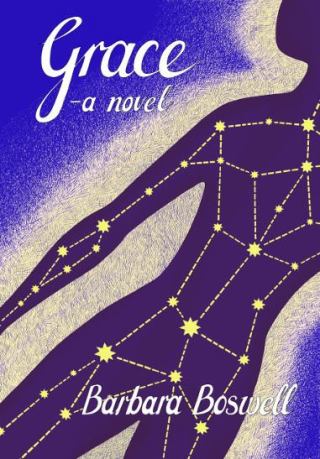
Grace is a fictional account of a family on the Cape Flats, living with the “open secret” of domestic violence.
The novel traces the main character’s development from a young girl who witnesses violence almost daily, into adulthood and motherhood.
It tries to show the lasting impact of living with intimate partner violence on the psyche of children who witness such abuse.
The idea for this novel came from my own childhood. Though Grace is fiction, much of my childhood was marred by increasingly brutal incidents of violence in our home, a space that should have been safe.
My writing on the topic started while I was completing courses in Gender and Women’s Studies, an academic discipline that gave me the language to describe and make sense of the violence I had endured as a child.
Writing allowed me to process the damaging effects of the violence I had witnessed, and enabled me to analyse the long shadow of such violence in my adult life.
The novel started off as random, cathartic ruminations on paper; an experiment to show, to some unnamed, faceless reader, what happens to women when they have no safe spaces in their lives.
Intimate partner violence, also called domestic violence, is a form of gender-based violence that occurs in the private realm of the home. It includes physical violence, sexual violence, threats or coercion, and emotional violence such as name-calling and verbal abuse.
Money can also be used to abuse an intimate partner.
South Africa has some of the highest rates of gender-based violence in the world, a trend which has persisted from apartheid through the transition to democracy.
As a survivor of domestic violence, I am relatively lucky. As a child, I was not the main target, only a witness. My scars were “only” psychological. I had a few caring adults in my life who provided some respite and a sense of normalcy.
My mother, sister and I were able, eventually, to safely leave the abuse. Many women are not as fortunate – a 2009 study on female murder rates in South Africa, found that 50% of women who were murdered were killed by an intimate partner.
Mortality rates from intimate partner violence were highest for women of colour aged 14-44.
Why don’t they just leave? This is a question often callously asked about people who suffer at the hands of a violent partner.
On average, a woman will leave her abuser seven times before permanently severing the relationship, but leaving an abuser comes with huge risks. Women who are abused by their partners are most likely to be murdered when they leave.
Research in the USA indicates that up to 75% of femicides – murders of woman by their intimate partners – occur at the point when women leave abusive relationships.
Children of domestic abuse face their own challenges. Even when they are not physically abused, children suffer lingering consequences of living with and witnessing intimate partner violence.
Girls who are physically abused, or witness their mothers being abused, are more likely to partner with violent men or women as adults.
A study conducted in South Africa in 2008 found that around 30 percent of men admitted to abusing a previous or existing wife or partner. This study further found that witnessing or experiencing domestic violence as a child was a significant indicator of becoming an abuser as an adult.
Living with abuse, apart from being life threatening and soul destroying, thus also increases the chances abuse being perpetuated in the next generation of a family.
These are all issues I sought to highlight in the form of fiction, which gave me the liberty of imagining how these people would rationalise and cope with their abuse on an emotional level.
* Barbara Boswell teaches English Literary Studies at the University of the Witwatersrand, where she specialises in Black and African women’s literature. Her novel Grace is available from Amazon.com and modjajibooks.co.za





